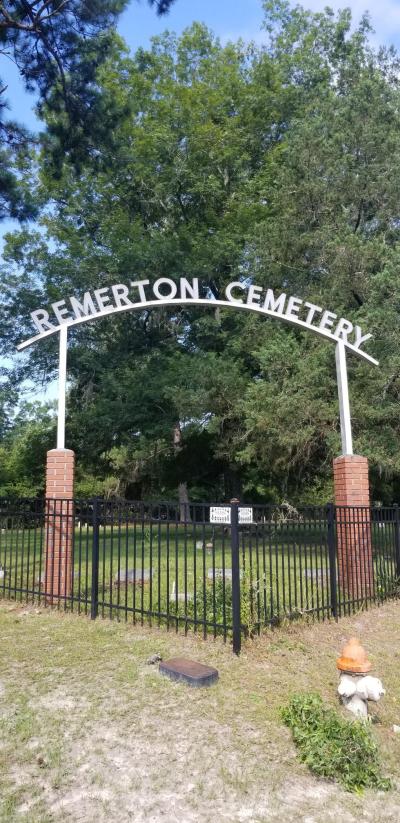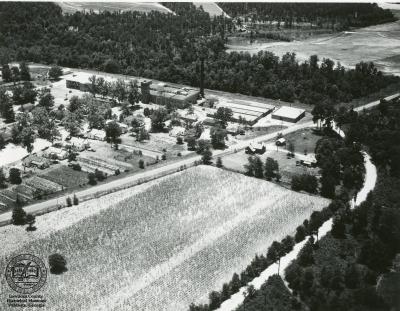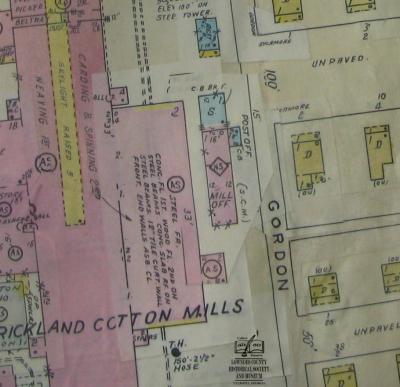
Remerton’s history is inextricably linked with both the Cotton Industry and the nearby city of Valdosta. Following the Civil War, the “New South Movement” encouraged the modernization and industrialization of the South’s mostly agricultural economy. The greater Valdosta area excelled at growing and trading Sea Island cotton, a very valuable commodity in the late nineteenth and early twentieth centuries, and one on which local leaders sought to capitalize. In fact, at one time, the downtown Cotton Exchange in Valdosta traded 20,000 bales each growing season. A regional leader in cotton production and an emerging financial center, Valdosta was ripe for the formation of a textile mill company.
In 1899, thirty-eight Valdosta merchants, bankers, and business men established the Strickland Cotton Mills, Inc. Among the corporation’s founders were Remer Y. Lane, his son, Mills Lane, and A.J., Charles, Joseph, and B.F. Strickland. Because the Strickland family had controlling interest in the new corporation and was instrumental in building the mill, the company assumed their name. Remerton, however, would later be named to honor Remer Young Lane, who was also the president of the Merchants Bank of Valdosta, and a major financial supporter of the mill.
The site of the mill and village (later the City of Remerton) was chosen due to its proximity to the Georgia Southern Railroad, the levelness of the land, and abundant pine trees, from which the workers’ housing was built. Located two and a half miles northwest of Valdosta’s downtown, the mill’s site also provided a safe distance from the city, in case of a boiler explosion.
Constructed in late 1899, the Strickland Cotton Mill began production in 1900. The original mill building also featured a prominent smokestack and a large four-story tower that housed an 11,000 gallon water tank vital for providing fire protection. In 1930, a 50,000 gallon water tower was built on the east side of the mill. Through its lifetime, the Strickland Mill steadily expanded. In 1900, it began with 5,000 spindles and 125 looms that produced 40,000 yards of cotton weekly. By 1972, the mill was operating with more than 20,000 spindles and 574 looms.3

As one of the largest employers in Lowndes County, Strickland Cotton Mills, Inc. provided housing within walking distance for its workers. The houses were constructed by local carpenters and from local materials while the Strickland Mill was being built. Located east of Gordon Street, the workers’ houses were constructed on modest lots along Sycamore (now Baytree Place), Poplar, and Plum Streets immediately adjacent to the mill. Alleys running north to south separated blocks at regular intervals, and footpaths running east to west allowed direct pedestrian access from Gordon to Myrtle Streets between the rows of houses on each block. By 1920, a total of 65 houses were built ranging in all different sizes. According to Barry Herrin’s History of the Strickland Mill and Remerton, the houses were not in order based on size or design but the larger houses tended to be closer to Baytree Road on Sycamore Street. Many of the houses were four room duplexes, with each side having two rooms and a shared front porch. There were also single family homes with four, five or six rooms.1 The mill village expanded in the early 1940s, with the building of several houses on Victory and Pine Streets. Because of the accessibility offered by the automobile, however, no further workers’ houses were built after World War II.

Developed similarly to a company town, Remerton was self-sufficient, with a school, three churches, and a village store. Ironically, much of the town’s self-sufficiency came from its relationship with the Strickland Mills, Inc. company. Mill workers spent most of their earnings in Remerton, paying rent to and purchasing items from the company. Remerton enjoyed a stable financial economy, due partly to mill workers’ reinvestment in their community, but also due to the Strickland family’s conservative operation of the mill. In fact, the mill expansion was slow for the first forty years. The only major additions to the complex before 1946 were additional water storage, waste handling facilities, and a folding room off the cloth room. In 1947-48, the size of the mill doubled, as a new addition was added to the south end of the original mill building. Two additional warehouses and additions to the weave and spinning shops were constructed by 1950. Expansions to the mill were completed by 1966.
In 1951, the Strickland mill and village became the incorporated City of Remerton, which allowed for much-needed federal and state aid. Following Remerton’s incorporation, economic factors caused the Strickland family to slowly lose control of the mill. The Strickland family had controlled the mill company from its founding in 1899, and the company’s presidency had been passed down from father to son to brother, from one generation to the next. In the late 1960s, A.J. “Bubba” Strickland, III took over leadership at the mill following his brother Frank’s death. Unlike past presidents, Bubba Strickland brought in mill supervisors from out of state, instead of promoting from within, and lacked the hands-on leadership role his predecessors carried. The familiar, family atmosphere of the mill disappeared, causing low morale among the mill’s workers. After several years during which the mill lacked cohesive leadership and conservative business practices, the Strickland Cotton Mill finally closed in 1979.

A few years later, WIPO Industries, a cloth manufacturing company, bought the mill building and renamed it Sugar Creek Textile Mill. They then sold the building in 1985 to Fred Wilkinson of Wilkinson’s Textile Company, who owned and operated it until November 2005. After attempts by community members and investors to preserve the structure, deconstruction on the Strickland Mill began in June of 2013.
As of today, the City of Remerton consists of 136 acres. Remerton created its charter in 1951 and is completely landlocked inside the City of Valdosta. The City of Remerton is a fully functioning city government which has a complete and active staffed Fire Department, Police Department, Public Works and Utilities, and a six-member Mayor and Council.
Sources
Lowndes County Historical Society
1. Herrin, Barry S. History of the Strickland Cotton Mill and Remerton, 1987.
2. King, Nina. Memories II of Remerton, 1997.
3. Pendleton, Albert. Way Back When, Volume I. 1998.
